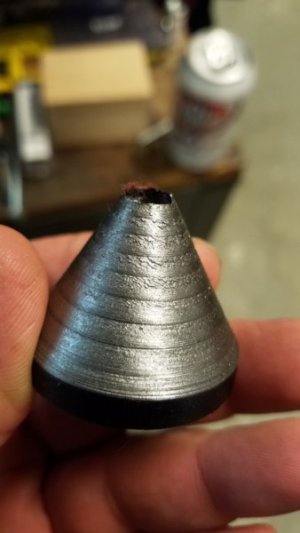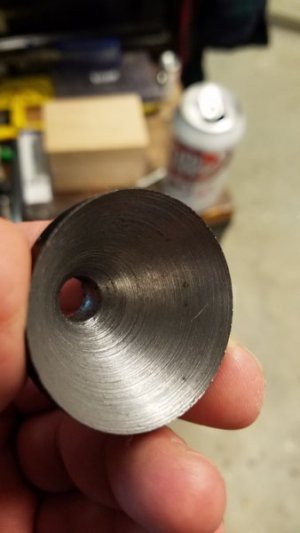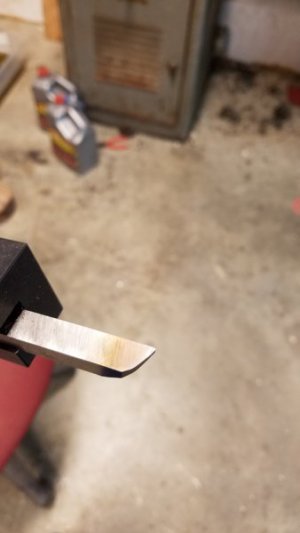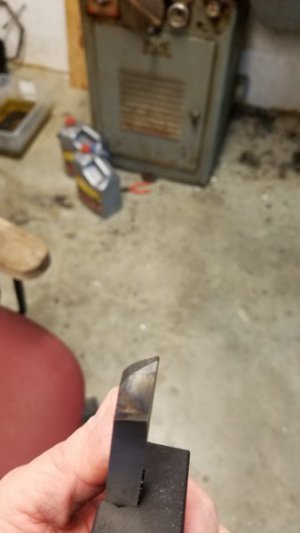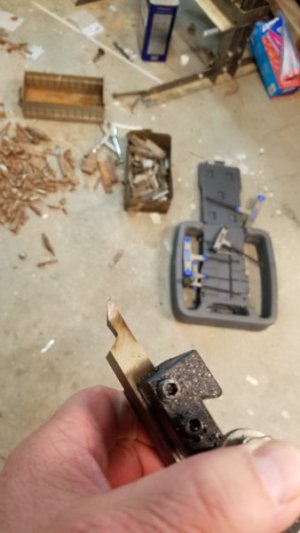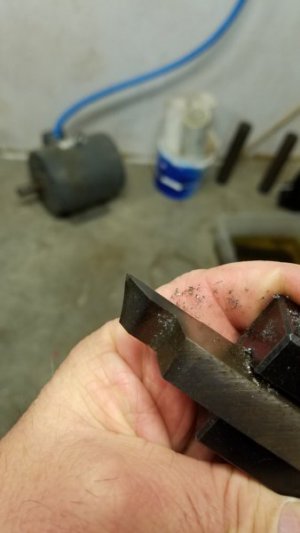I'll comment on the tools but I hope you understand that I'm trying to help, okay?
Both of your tools have zero rake, meaning the tops are flat. That's okay but the tools will cut with pretty high cutting forces and they will cut hot because the chips are not being evacuated from the cut very quickly. Basically, they are functioning like form tools and as I'm sure you know, form tools cannot handle heavy cuts because they cut with a lot of resistance. Accordingly, the finish is poor with a tool like this unless you take really light cuts.
If I were going to do a 60 degree inside taper like that, I would use a boring bar. Even one of those cheap Chinese brazed carbide boring bars will make short work of that taper. If you want to grind the tool then give yourself more side relief, at the very least 8-10 degrees to reduce rubbing. In use, angle the tool so that it cuts with the side edge, up near the tip.
I would suggest you grind your external turning tool a bit differently. Rather than trying to describe how to do it here, I hope you don't mind having a look at this thread:
https://www.hobby-machinist.com/threads/models-for-grinding-hss-lathe-tools.62111/. Go to post #104 and have a look at how the turning tool is ground. That tool has tool angles of 15 degree all around but for your tool I would shape it the same way as in the post but use the angles I listed in my post above. In other words, follow the sequence in the pictures in that post but change the table angles.
- Set the grinder tool rest at 10 degrees and grind the side and end as shown in the pics.
- Once the side and end are done, re-set the tool rest to 20 degrees and draw a line at a 12 degree angle on your tool rest and grind the rake angles as shown in the pics.
Hone the side, end and top to remove the grind marks and put a small radius at the nose of the tool. To do this, put a small flat at the tip of the tool that follows the angle at the nose. You want the flat even from top to bottom. Then gently round the flat and blend it into the side and end of the tool. Give the tool a final hone on top and you're ready to cut.
I know this tool will cut 4140 well. I have a tool that is similarly shaped and it cuts as it should. For roughing, angle the shank of the tool so it is angled toward the chuck by about 3-5 degrees. For finishing, turn it towards the tailstock the same amount and take light cuts at higher speed.
I think that work piece is a difficult thing to make because you don't have a lot to hold on to when cutting the external taper. It looks to me like you have under 1/4" to grab on to and that is an issue because the material is rather hard and the work can slip in the chuck. Assuming you will cut the internal taper first and then chuck it up to turn the outside taper, you will need to take light cuts to keep from ripping the part out of the chuck. The tool, if ground as I described, should be able to take light accurate cuts (0.010 - -.020" deep") without too much cutting force and you might get away with it.
Let us know how it goes.

